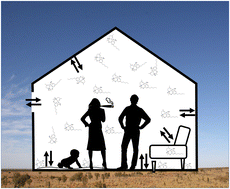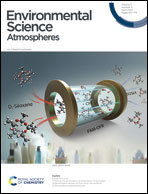Modeling the fate and involuntary exposure to tetrahydrocannabinol emitted from indoor cannabis smoking†
Abstract
Indoor air quality implications of cannabis consumption are of increasing significance following the recent trends toward legalization in many countries. Here, a level IV fugacity model is used to predict the time-variant fate of tetrahydrocannabinol (THC) emitted from cannabis smoking in an evaluative indoor environment and the resultant involuntary exposure to THC of residents of different age. With daily smoking of a typical cannabis cigarette containing 30 mg THC over one hour per day for one year, we predict THC indoor air concentrations to fall to values less than 100 ng m−3 within the first months, while concentrations on a carpet and vinyl flooring can reach more than 1 mg m−3 within one year. Non-dietary ingestion and inhalation are identified as the main routes of involuntary exposure for infants and adult residents, respectively, with rates of THC intake for infants exceeding those for adults by two orders of magnitude. Improved ventilation and PM filtration are demonstrated to be effective measures to reduce THC exposure levels, while leaving the smoking site is partially effective for that purpose. Sensitivity analysis reveals that the model results are most sensitive to input values for airborne particulate matter (PM) levels and parameters associated with air-to-surface partitioning, suggesting that a better understanding of these parameters is needed.

- This article is part of the themed collections: Outstanding Papers 2023 – Environmental Science: Atmospheres, Indoor Air Quality and Environmental Science: Atmospheres: Highlight USA & Canada


 Please wait while we load your content...
Please wait while we load your content...